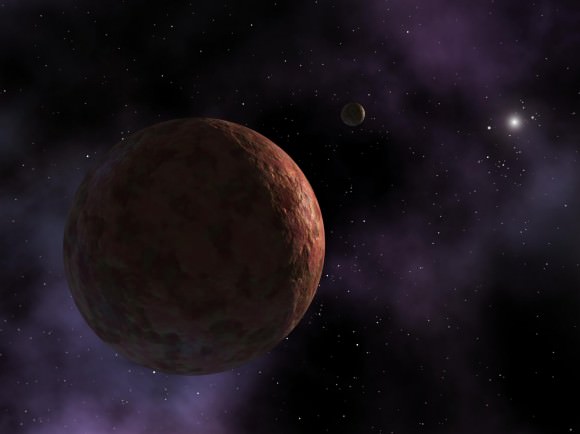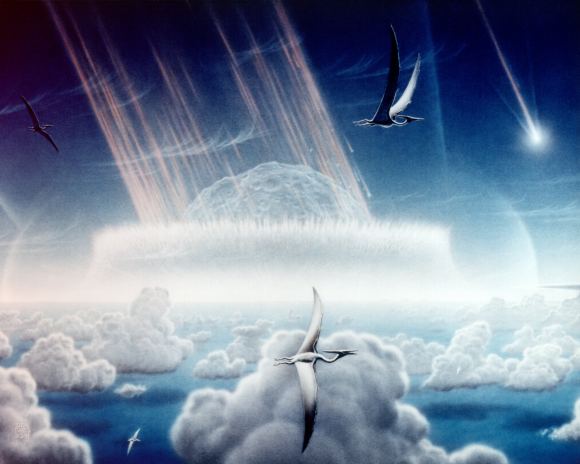In January of 2016, astronomers Mike Brown and Konstantin Batygin published the first evidence that there might be another planet in our Solar System. Known as “Planet 9” (or “Planet X”, to those who contest the controversial 2006 Resolution by the IAU), this hypothetical body was believed to orbit at an extreme distance from our Sun, as evidenced by the fact that certain Trans-Neptunian Objects (TNOs) all seem to be pointing in the same direction.
Since that time, other lines of evidence have emerged that have bolstered the existence of Planet 9/Planet X. However, a team of researchers from CU Boulder recently proposed an alternative explanation. According to their research, it could be interactions between Kuiper Belt Objects (KBOs) themselves that might explain the strange dynamics of “detached objects” at the edge of the Solar System.
The researchers presented their findings at the 232nd meeting of the American Astronomical Society, which ran from June 3-7 in Denver, Colorado. The presentation took place on June 4th during a press conference titled “Minor Planets, Dwarf Planets & Exoplanets”. The research was led Jacob Fleisig, an undergraduate studying astrophysics at CU Boulder, and included Ann-Marie Madigan and Alexander Zderic – an assistant professor and a graduate student at CU Boulder, respectively.

For the sake of their study, the team focused on icy bodies like Sedna, a minor planet that orbits the Sun at a distance ranging from 76 AU at perihelion to 936 AU at aphelion. Along with a handful of other objects at this distance, such as Eris, Sedna appears to be separated from the rest of the Solar System – something which astronomers have struggled to explain ever since it was discovered.
Sedna was also discovered by Michael Brown who, along with Chad Trujillo of the Gemini Observatory and David Rabinowitz of Yale University, spotted it on November 14th, 2003, while conducting a survey of the Kuiper Belt. In addition to orbiting our Sun with a period of over 11,000 years, this minor planet and other detached objects has a huge, elliptical orbit.
What’s more, this orbit does not take them Sedna or these other objects anywhere near to Neptune or any other gas giant. Unlike Pluto and other Trans-Neptunian Objects (TNOs), it is therefore a mystery how they achieved their current orbits. The possible existence of a as-yet-undiscovered planet (Planet 9/Planet X), which would be about 10 times the size of Earth, is one hypothetical explanation.
After years of searching for this planet and attempting to determine where its orbit would take it, astronomers have yet to find Planet 9/Planet X. However, as Prof. Madigan explained in a recent CU Boulder press release, there is another possible explanation for the gravitational weirdness going on out there:
“There are so many of these bodies out there. What does their collective gravity do? We can solve a lot of these problems by just taking into account that question… Once you get further away from Neptune, things don’t make any sense, which is really exciting.”
While Madigan and her team did not originally set out to find another explanation for the orbits of “detached objects”, they ended up pursuing the possibility thanks to Jacob Fleisig’s computer modelling. While developing simulations to explore the dynamics of the detached objects, he noticed something very interesting about the region of space they occupy.
Having calculated the orbits of icy objects beyond Neptune, Fleisig and the rest of the team noticed that different objects behave much like the different hands on a clock. Whereas asteroids move like the minute hand (relatively fast and in tandem), larger objects like Sedna move more slowly like the hour hand. Eventually, the hands intersect. As Fleisig explained:
“You see a pileup of the orbits of smaller objects to one side of the sun. These orbits crash into the bigger body, and what happens is those interactions will change its orbit from an oval shape to a more circular shape.”
What Fleisig’s computer model showed was that Sedna’s orbit goes from normal to detached as a result of those small-scale interactions. It also showed that the larger the detached object, the farther it gets away from the Sun – something which agrees with previous research and observations. In addition to explaining why Sedna and similar bodies behave the way they do, these findings may provide clues to another major event in Earth’s history.

This would be what caused the extinction of the dinosaurs. Astronomers have understood for a long time that the dynamics of the outer Solar System often end up sending comets towards the inner Solar System on a predictable timescale. This is the result of icy objects interacting with each other, which causes their orbits to tighten and widen in a repeating cycle.
And while the team is not able to say that this pattern was responsible for the impact that caused the Cretaceous–Paleogene extinction event (which resulted in the extinction of the dinosaurs 66 million years ago), it is a fascinating possibility. In the meantime, the research has shown just how fascinating the outer Solar System is, and how much remains to be learned about it.
“The picture we draw of the outer solar system in textbooks may have to change,” said Madigan. “There’s a lot more stuff out there than we once thought, which is really cool.”
The research was made possible thanks to the support of the NASA Solar System Workings and the Rocky Mountain Advanced Computing Consortium Summit Supercomputer.
Further Reading: University of Colorado Boulder


Ok, doesn’t this argument sound redundant? doesn’t planet 9 consist of a big chunk of the collective gravity out there? If there were just a bunch of small objects randomly encountering each other, wouldn’t they end up in a more diffuse distribution with no discernable pattern to their orbits, instead of having groups of objects with eerily similar orbital characteristics and alignments? An then there is the 6 degree tilt of the sun on it’s equatorial axis. So far only planet 9 in its hypothetical orbit is the only adequate explanation for how this happened.
I will self correct this before someone else has the chance to. Technically it’s the other planets that are tilted 6 degrees off the sun’s equatorial axis. And yes there are 2 other hypothetical causes (sun’s magnetic field interactions with the protoplanetary disc and an early imbalance in the sun’s core), but they only cover the very early period of solar history, and are less likely to hold true.